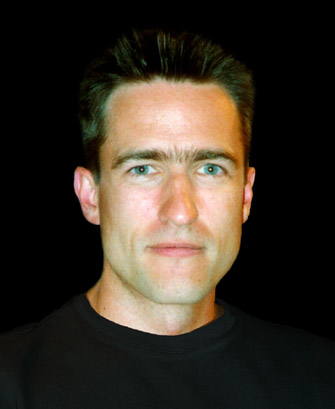Making Sense on Small Screens
 Patrick
Baudisch, Microsoft Research
Patrick
Baudisch, Microsoft Research
baudisch![]() microsoft.com
microsoft.com
Seminar on People, Computers,
and Design
Stanford University September 30, 2005
Today’s ‘smart’ cell phones are designed to allow users to
perform a set of comparably simple tasks, such as reproducing driving directions
or recalling bookmarked websites. More demanding variants of the same activities,
such as route planning or the interactive exploration of the web, on the other
hand,
have received only limited or no support. And why should they--it is more
convenient for users to perform these activities on their PCs to then simply
upload the results to the device.
This, of course, assumes that users have access to a PC. In most cases, however,
this assumption is wrong. There are 1.5 billion cell phones worldwide, but
only 400 million PCs. The majority of phone users live in fact outside the
western orld. For many of them the phone is the first and only digital device
they own. In this talk I argue that these phones could be the opportunity
to get access to the functionality of a networked computer and to participate
in the digital
life of the first world. I am addressing this scenario from a human-computer
interaction perspective. How can we display complex documents on displays
the size of a stamp? How can users interact with such documents? I am presenting
a selection of techniques: ‘halo’ helps users perform spatial reasoning
on large maps; ‘summary thumbnails’ and ‘collapse-to-zoom’
allow users to make sense of web pages by compressing them to the size of
the phone screen.
Slides: http://patrickbaudisch.com/publications/2005-Baudisch-SmallScreens.ppt
More information: http://patrickbaudisch.com/projects
Bio: http://patrickbaudisch.com/biography
![]()
Patrick Baudisch is a research scientist in the field of human-computer interaction at the Adaptive Systems and Interaction Research Group at Microsoft Research, as well as an Affiliate Assistant Professor in Computer Science at the University of Washington. His focus is on interaction techniques that help users interact with very large displays and visualization techniques that allow users to view large documents on small screen devices. Patrick’s last presentation at the Human-Computer Interaction Seminar was about focus plus context screens, work he did while at Xerox PARC. He holds a PhD in Computer Science from Darmstadt University of Technology, Germany.
![]()
View this talk on line at CS547 on Stanford OnLine
Titles and abstracts for previous years are available by year and by speaker.